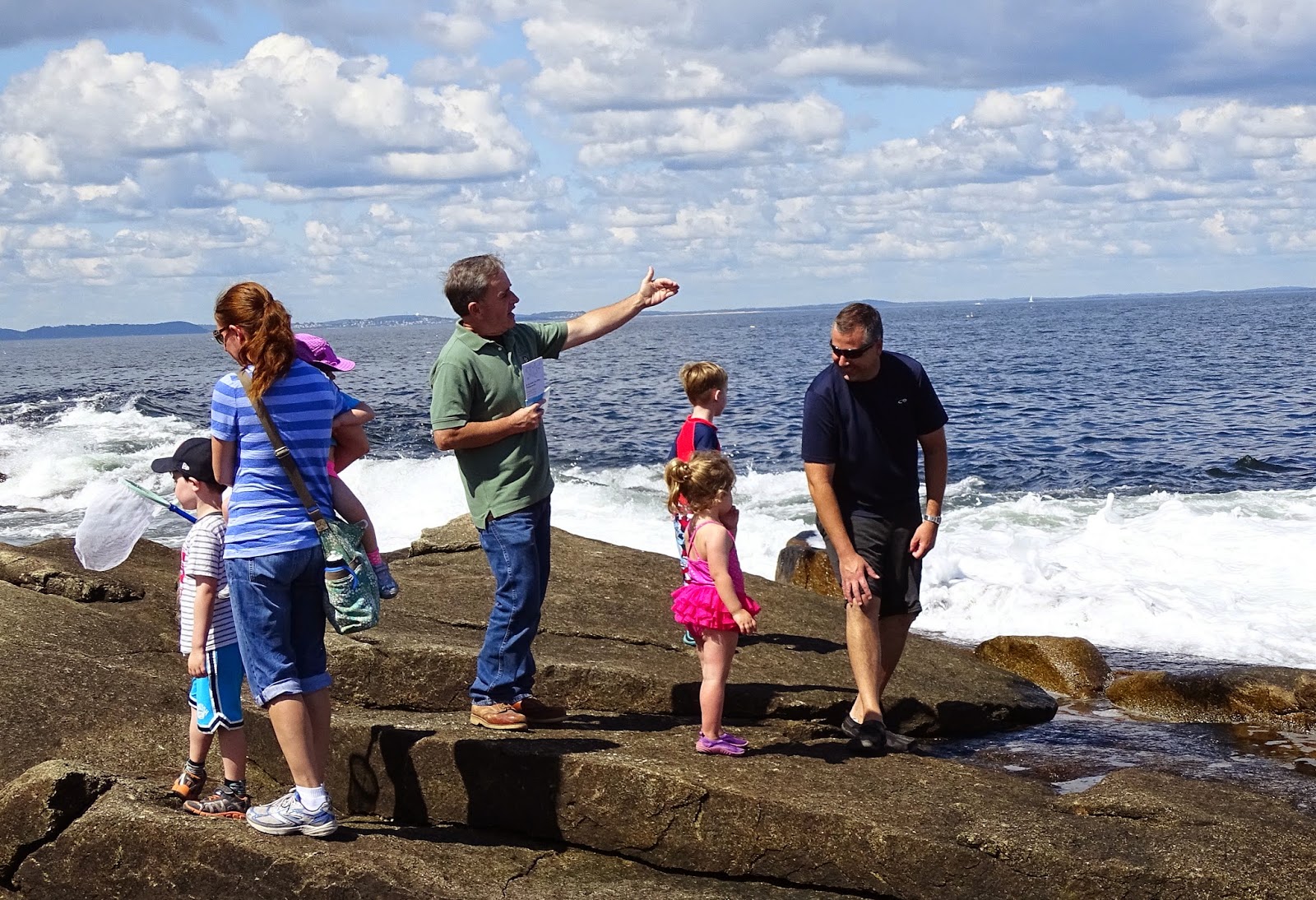At Halibut
Point geology means granite. Barbara Erkkila, our doyenne of granite, wrote
about the industry (Hammers on Stone,
1980) and also fashioned granite into jewelry. Broadly speaking Barbara made
granite into a gemstone. People who knew her personally think of her as a gem.
 |
| Red granite buckle by Barbara Erkkila |
Halibut
Point is Everyman's encounter with geology. The ocean, glaciers and quarrying
have presented the bones of the continent in plain sight. We can't help
wondering at least a little about it all.
Geologists
wonder full time. At Halibut Point we've been fortunate to have geologist John Ratti as Park Interpreter
since 2005. John tries to make it comprehensible for the rest of us. As a
subject area it is full of intricacies, mysteries, hunches and specialized
vocabulary, just like all other branches of knowledge. It's not an exact science
but it contributes to progress and the satisfaction of curiosity.
Here's what
it's like to have the geology bug: John says that every time he drives by
roadwork or a blasting site, he wants to go back for a look. "If you're a
geologist, that's like heaven." A free pass into the earth's crust.
 |
| Andrews Point pegmatite seam |
Adjacent to
Halibut Point lies a celebrity feature in Massachusetts geology, the Andrews
Point pegmatite that includes large 'blue'
quartz crystals. These look like low-grade amethyst and may once have included
gem-quality stones plucked away by earlier adventurers. By commercial standards
what we see now lacks preciousness, falling short in terms of color,
translucence and rarity.
 |
| 'Blue' quartz, close up |
Interesting
things happen in pegmatites that draw
the attention of geologists all around the globe. Pegmatites seem to originate
as a creative chemical soup at the interface of magma masses deep within the
planet, perhaps in the presence of super-heated super-pressurized air and water
trapped alongside. If these conditions remain for a very long time exotic
crystals can form and grow.
John Ratti
is always on the lookout for pegmatites. He split open a promising-looking
boulder with a feldspar seam that he noticed on Halibut Point. Inside were two
minerals that had caught his attention years before at the Harvard
Mineralogical Museum, because of their Cape Ann associations. He has put them
on display at the Visitors' Center.
Back in
the 1860s Yale Professor
James Dwight Dana described the very first examples of these
minerals right here in Rockport. You can imagine that our quarrying industry
provided an attractive hunting ground. Danalite is
named for him, the reddish crystal Fe2+4Be3(SiO4)3S above. Within the once-molten pegmatite traces of beryllium, silicon, and sulphur found just the right chemistry with iron and oxygen.
The black mineral in the photograph is annite, a member of the mica group. It contains large amounts of potassium. According to its Wikipedia article annite is of special interest to geologists in potassium-argon
dating processes that determine the age of articles older than 1000 years. It
also preserves an ancient record of the direction and intensity of the local
magnetic field, which give geologists clues to rock origins that may have been
thousands of miles away.
 |
| Park Interpreter John Ratti |


It's hard to think of Halibut Point with lava and volcanoes. The world has been around a long time (and changed a lot)!
ReplyDeleteJust took Sunday's granite tour with John. Very interesting, and we had a great time!!!
ReplyDelete